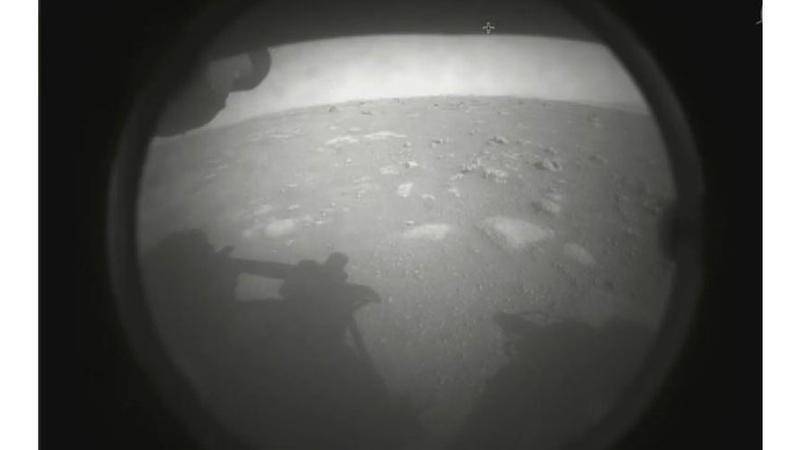The Perseverance rover has landed on the surface of Mars after successfully navigating a high-risk landing phase known as the "seven minutes of terror."
NASA, the American space agency, announced today that the Perseverance rover has touched down on Mars, with operations lead Swati Mohan confirming the landing. This announcement was met with cheers at NASA's Jet Propulsion Laboratory. Additionally, NASA's Deputy Administrator, Thomas Zurixhen, celebrated the occasion on Twitter with the word "Awesome!!," alongside sharing the first black and white image of the Perseverance rover taken from the Jezero Crater located in the northern hemisphere of Mars.
Weighing one ton, the Perseverance rover is equipped with a two-meter-long robotic arm, 19 cameras, microphones, and an array of advanced tools to assist in achieving its scientific objectives. The Perseverance rover is only the fifth rover ever to set its wheels on Mars, following a project that first occurred in 1997, with all previous rovers being American.
The mission of this new rover will span several years as it searches for biosignatures of microorganisms that may have existed on Mars billions of years ago when conditions were warmer and wetter than they are today. With the arrival of summer, the rover will attempt to collect 30 samples of rocks and soil in sealed tubes, which will eventually be sent back to Earth for analysis in a laboratory, anticipated to happen around 2030.
NASA geologist Katie Stack Morgan expressed, "The question of whether there is life beyond Earth is one of the most fundamental questions we can ask." She added, "Our ability to ask that question and develop scientific inquiries and technology to answer it is one of the things that makes us a unique species."
Moreover, NASA aims to perform several remarkable experiments on Mars, including an attempt to achieve the first powered flight on another planet using a small drone helicopter named 'Ingenuity,' which will have to fly in an atmosphere that is only 1% as dense as that of Earth.




